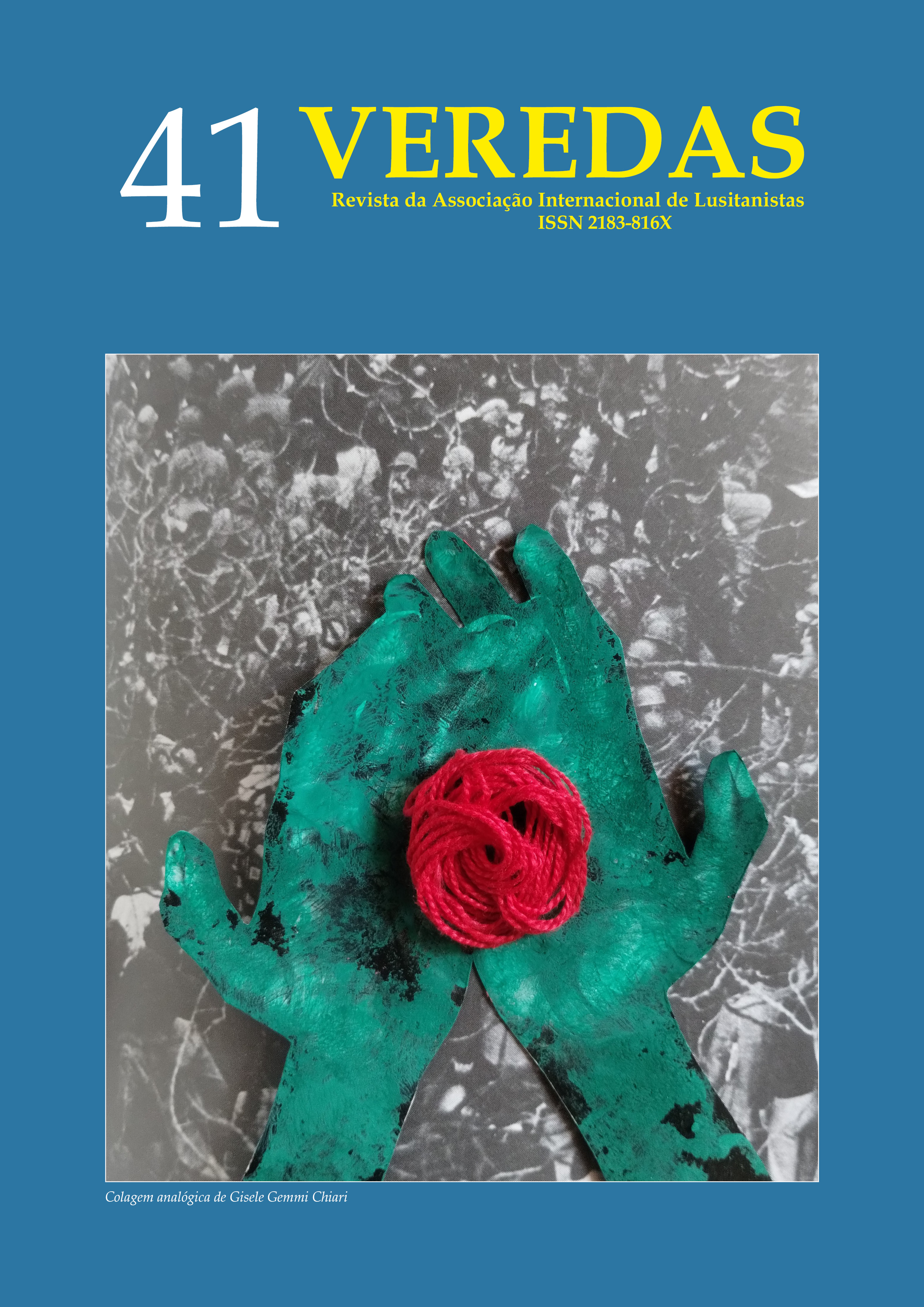Abstract
This article proposes an analysis of the consumer society, in the light of Pier Paolo Pasolini’s corsaircritique, as it is portrayed in the novel The Cave (2000), written by José Saramago. Starting from the notion of habitat, present in “Arte Poética I”, by Sophia de Mello Breyner Andresen, we seek to examine the problematic relationship between the subject and the historical time after Carnation Revolution, whose developments subvert the expectation of democratic reconstruction and contrast with the Andresenian project of wholeness. The three intellectuals mobilized in this work identify with each other when they note the existence of a new form of power underway in (post-)modernity, whose Pasolinian examination in the 1970s highlights how this new power is not supported, as classical fascism, in the institutions of the Homeland, Family and Church, but it is an order that is more ferocious because, under the mask of tolerance, it imposes “hedonism” and “joie de vivre” (PASOLINI, 2020), just as is evident in Saramago’s end-of-century novel.
References
ABOS, Márcia. 'Não sou pessimista, o mundo é que é péssimo', desabafa Saramago. O Globo, São Paulo, 25 nov. 2011. Disponível em: https://oglobo.globo.com/cultura/nao-sou-pessimista-mundo-que-pessimo-desabafa-saramago-3604651. Acesso em: 25 mar. 2024.
ADORNO, Theodor W. Dialética do esclarecimento: fragmentos Tradução: Guido Antonio de Almeida. Rio de Janeiro: Zahar, 1985.
ANDRESEN, Sophia de Mello Breyner. Contos exemplares. Porto: Figueirinhas, 2006.
ANDRESEN, Sophia de Mello Breyner. Coral e outros poemas: seleção e apresentação Eucanaã Ferraz. São Paulo: Companhia das Letras, 2018.
ANDRESEN, Sophia de Mello Breyner. Ilhas. Lisboa: Caminho, 2004.
BERARDINELLI, Alfonso. Pasolini, personagem poeta. Poemas. Tradução e notas: Maurício Santana Dias. São Paulo: Cosac Naify, 2015.
COELHO, Eduardo Prado. Sophia: a lírica e a lógica. Colóquio Letras, Lisboa, n. 57, p. 20-35, 1980.
COSTA FEITEIRA, Letícia. A caverna, de José Saramago, pela “lição de coisas” andreseniana. Confluenze Rivista di Studi Iberoamericani, Bologna, v. 15, n. 1, p. 81-96, 2023.
GAGLIARDI. Caio. O que é uma ânfora? Revista do Centro de Estudos Portugueses, Belo Horizonte, v. 38, n. 60, p. 13-24, 2018.
KOLEFF, Miguel Alberto. De Juan Maltiempo a Cipriano Algor: tres o cuatro pinceladas sobre los personajes samaraguianos. Revista de Estudos Saramaguianos, {S.l.], n. 9, p. 117-125, 2019.
PASOLINI, Pier Paolo. Escritos corsários. Tradução, apresentação e nota: Maria Betânia Amoroso. São Paulo: Editora 34, 2020.
PASOLINI, Pier Paolo. Poemas. Tradução e notas: Maurício Santana Dias. São Paulo: Cosac Naify, 2015.
PASOLINI, Città. Il folle slogan dei jeans Jesus. Pasolini sul "Corriere" 17 maggio 1973. 16 mag. 2024. Disponível em: https://www.cittapasolini.com/post/il-folle-slogan-dei-jeans-jesus-pasolini-sul-corriere-17-maggio-1973. Acesso em: 25 fev. 2024.
SARAMAGO, José. A caverna. 2. ed. São Paulo: Companhia das Letras, 2017.
SARAMAGO, José. Ensaio sobre a cegueira: a arquitetura de um romance. Porto Editora, 2015.
SARAMAGO, José. Ensaio sobre a cegueira. São Paulo: Companhia das Letras, 1995.
SARAMAGO, José. Realidade superou Orwell, afirma Saramago [Entrevista concedida a Haroldo Ceravolo Sereza]. O Estado de S. Paulo, São Paulo, 11 de nov. 2000. Caderno 2, p. D11.
SENA, Jorge de. Estudos de literatura portuguesa III. Lisboa: Edições 70, 1988.

This work is licensed under a Creative Commons Attribution 4.0 International License.
Copyright (c) 2024 Letícia Costa Feiteira

